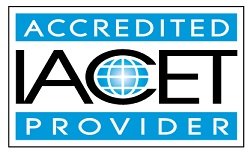Course Description
Electrical Stimulation has been used clinically for a variety of indications for more than 50 years. Recently, functional electrical stimulation (FES) and therapeutic electrical stimulation (TES) have shown to improve functional outcomes in patients with upper motor neuron pathologies such as stroke, brain and spinal cord injuries, multiple sclerosis, and cerebral palsy. In the United States, over 1,000 clinics and hospitals currently utilize Bioness FES technologies in their care and there are over 6,000 patients using the technologies to maximize their independence at home. This two-hour video course, designed for therapist clinicians, will offer a review of pertinent neuroanatomy utilized during electrical stimulation, and provide the physiological justification for choosing the correct stimulation parameters for FES. This course will review the general scientific background for stimulation parameters to use with any FES device, and also relate the information to the application of Bioness technologies.
Course Requirements:
- Computer with internet and working speakers/sound are required for this course.
- Course must be completed within 30 days of activation (activate course within 6 months of purchase).
- An online multiple-choice quiz (80% passing score) and submission of an online evaluation form are required for successful completion.
- A certificate of completion will be available to print immediately after course is successfully completed.
Course Objectives
Upon successful completion of this course, participants will be able to:
- Identify pertinent central and peripheral nervous system anatomy utilized during electrical stimulation
- Describe the Functional and Therapeutic Electrical Stimulation models
- List the components of a basic electrical circuit and applying Ohm’s Laws to electrical stimulator devices
- Recognize common nomenclature used to describe waveform characteristics of pulsatile currents
- Describe the Strength/Duration Curve of Pulse Charge and the thresholds of peripheral nerve excitation
- Describe the action potential of a neural membrane, and the clinical effect of selected frequencies of stimulation
- List the stimulation parameters involved in charge delivery and develop strategic changes to these parameters based on clinical presentation
- Amplitude, Phase Duration, Frequency, Ramps
Nathan Foreman
PT
Nathan Foreman, PT, MPT is the Manager of Clinical Education for Bioness Inc. Nathan has 10 years of experience working with the neurological patient population including time as a teaching faculty at The University of Texas Southwestern Medical Center at Dallas. He was an educator, treated patients, and performed movement analysis, EMG, fMRI, and SPECT-based research in the Neurological Gait Lab at UTSW before leaving his position to work for Bioness, Inc. His area of clinical expertise is gait assessment and training associated with neurological pathologies and conditions. He has experience with clinical research development of single and multi-site projects. Nathan has experience teaching nationally and internationally in areas of gait rehabilitation and electrotherapy in neurorehabilitation.
24 Minutes
The Central and Peripheral Nervous Systems
24 Minutes
The Basics of Electrophysiology
24 Minutes
Responses to Electrical Stimulation
24 Minutes
Electrical Stimulation and Bioness Technologies
Delivery VIA:
- Online - This course is offered in an online, on demand format.
Contact hours pre-approved for:
- 2.0 Hours
- CIAO is an approved provider for AOTA #4119 (OT/COTAs)
- This course meets PDU requirements for NBCOT (2 PDUs)
- As an IACET Authorized Provider, CIAO offers CEUs for its programs that qualify under the ANSI/IACET Standard
- CIAO is authorized by IACET to offer .2 CEUs for this program
- CIAO is an Illinois Approved Provider for PT/PTA Continuing Education
- CIAO is recognized as an Approved Provider for PT/PTAs by the NYSE Dept State Board for PT
- This activity is provided by the Texas Board of PT Examiners Accredited Prov #2202009#TX
- This activity meets continuing competence requirements for PT/PTA license renewal in TX
- The assignment of Texas PT CCUs does not imply endorsement of specific course content, products or clinical procedures by TPTA or TBPTE
- Approved for:
- 2.0 Hours PT/PTAs in AR, IL, MD, NY, TX(2CCUs)
- 2.0 Hours OT/COTAs in FL (CE Broker #20-403995)

The assignment of AOTA CEUs does not imply endorsement of specific course content, products, or clinical procedures by AOTA.

CIAO is accredited by the International Association for Continuing Education and Training (IACET). CIAO complies with the ANSI/IACET Standard, which is recognized internationally as a standard of excellence in instructional practices. As a result of this accreditation, CIAO is accredited to issue the IACET CEU.

CIAO is recognized on the NBCOT Provider Registry (meets PDU requirements for NBCOT)
"This course was really helpful and informative. The presenter added in a lot of clinical examples to make the information clear and relevant. Thank you!"
- Passaic, NJ / Aug 2016
"Awesome!! Thanks so much for getting me to understand FES!"
- Golden, CO / Sep 2015
"Very helpful course.
I certainly gained increased knowledge and understanding of this subject.
Thank you for all of the information and course material shared. "
- Centennial, CO / May 2015
"An excellent refresher, well delivered in a very user friendly format!! Plus some very useful new knowledge, too!
That said, to be picky...I would have liked more info on fiber type recruitment with stim vs. volitional contractions; other effects, e.g. changes in bone mass, muscle, cardiovascular, etc.; effects of use of stim. on able-bodied for strength training when combined with volitional recruitment; what would be required to stimulate a denervated muscle (e.g. increase in pulse duration, change in waveform or current?, etc.).
Seriously, though, one of the best on-line courses I have ever taken! Well done!!!
"
- Wayne, NJ / Jan 2015
"I loved how the instructor was able to use clinical scenarios to help me understand the science-based concepts. "
- Flowood , MS / Sep 2014
 ×
Home
Calendar
Courses
Club CIAO
Request A Course
VitalStim® Info
VitalStim® Registry
Products
eCourse Bundles
About Us
Our Mission
Podcasts
FAQs/Forms
Toys & Tools
Search
Contact
Login!
×
Home
Calendar
Courses
Club CIAO
Request A Course
VitalStim® Info
VitalStim® Registry
Products
eCourse Bundles
About Us
Our Mission
Podcasts
FAQs/Forms
Toys & Tools
Search
Contact
Login!




